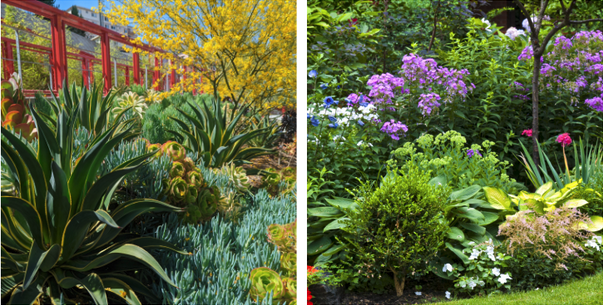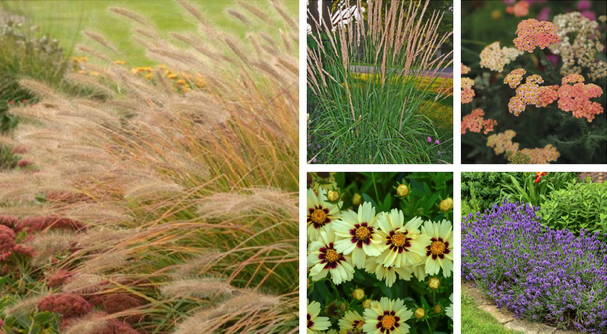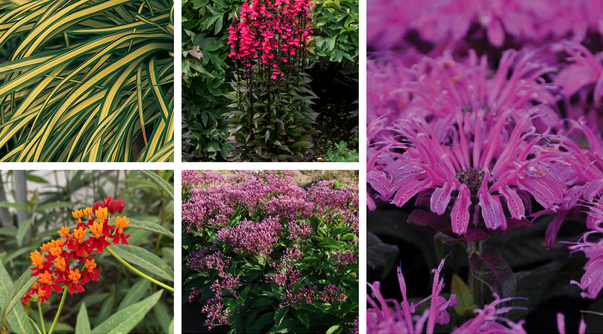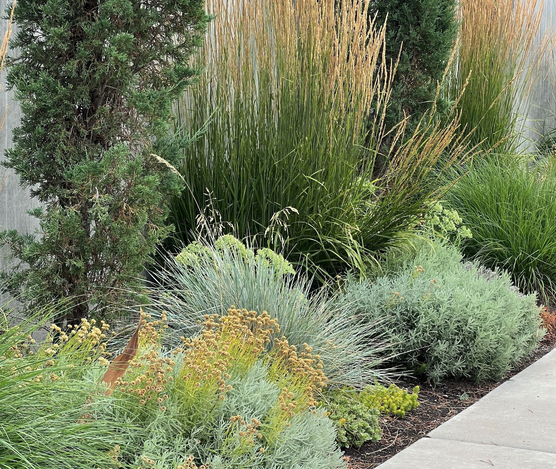From Drought to Deluge: Cultivating Paradise in Dry-Land and Wet-Land Empires
Arm yourself with your test results from your soil type test and now your drainage behavior test. There are only a few elements to go before we have everything you need for the best garden in the neighborhood.

Plant Selections
Some plants, like succulents and cacti, prefer well-drained soil, while others, like bog plants, thrive in wet conditions. Choose plants that are adapted to the drainage characteristics of your soil.
By understanding your soil drainage and selecting appropriate plants, you can create a thriving and healthy garden that flourishes year-round.
Fast Draining + Drought
The prolonged period of abnormally low rainfall will lead to soil moisture depletion and plant stress. It can have a significant impact on gardens, causing wilting, stunted growth, and even plant death. To mitigate the effects of drought, gardeners can implement several water-wise practices:
- Deep watering: Water less frequently but more deeply to encourage roots to grow deeper, accessing water reserves in lower soil layers.
- Mulching: Apply a layer of organic mulch around plants to suppress weeds, retain soil moisture, and regulate soil temperature.
Xeriscaping: Choose drought-tolerant plants that are adapted to low-water conditions.
Plant Selection for Water Conservation

Below are merely a handful of hardy perennials that hold available water or have naturally low need for water, making them excellent choices for xeriscaping and other drought conditions.
- Succulents: These desert-adapted plants store water in their fleshy leaves, making them ideal for dry conditions. Sedum list
- Native and nativars: Plants with native, regional heritage are either naturally adapted to local climate conditions, including water availability or hand selected for resilient behaviors.
Fountain Grass (Pennisetum alopecuroides): This graceful grass produces soft, feathery plumes that dance in the breeze. It prefers well-drained soil and full sun, and is very drought-tolerant once established. Prairie Winds® 'Desert Plains', Prairie Winds® 'Lemon Squeeze' and Puppy Love.
Feather Reed Grass (Calamagrostis spp.): These tall, striking grasses produce feathery plumes that add a touch of drama to the garden. They prefer well-drained soil and full sun, and are very drought-tolerant once established. Karl Foerster Feather Reed Grass.
Elijah Blue Fescue (Festuca glauca): This low-growing grass has fine, blue-green foliage that adds a touch of elegance to the garden. It prefers well-drained soil and full sun, and is very drought-tolerant once established. 'Blue Whiskers' Blue Fescue
Yarrow (Achillea spp.): This versatile perennial comes in a wide range of colors, from white to yellow to pink to red. It tolerates a wide range of soil conditions, including poor and rocky soil, and is very drought-tolerant. 'Firefly’ series of Achillea + ‘New Vintage’ series of Achillea.
Lavender (Lavandula spp.): This fragrant perennial is known for its beautiful blooms and calming aroma. It prefers well-drained soil and full sun, and is very drought-tolerant once established. Sweet Romance® Lavender
Coneflower (Echinacea spp.): These hardy perennials produce daisy-like flowers in shades of pink, purple, and white. They are tolerant of a wide range of soil conditions, including poor and dry soil, and are very drought-tolerant. Echinacea collection.
Russian Sage (Perovskia atriplicifolia): This striking perennial produces spikes of blue-purple flowers in summer. It prefers well-drained soil and full sun, and is very drought-tolerant once established. 'Denim 'n Lace' Russian Sage + 'Sage Advice'
Coreopsis (Coreopsis spp.): These cheerful perennials produce daisy-like flowers in shades of yellow, orange, and red. They are tolerant of a wide range of soil conditions, including poor and dry soil, and are very drought-tolerant. Coreopsis collection.
Catmint (Nepeta spp.): This fragrant perennial produces clusters of lavender-blue flowers in summer. It prefers well-drained soil and full sun, and is very drought-tolerant once established. Nepeta collection.
Daylily (Hemerocallis spp.): These easy-to-care-for perennials produce a long succession of blooms in a wide range of colors. They are tolerant of a wide range of soil conditions, including poor and dry soil, and are very drought-tolerant. Hemerocallis collection.
Sedum (Sedum spp.): These succulent perennials come in a wide range of shapes and sizes, from creeping groundcovers to tall, upright plants. They are tolerant of a wide range of soil conditions, including poor and dry soil, and are very drought-tolerant. Sedum collection
Artemisia (Artemisia spp.): These aromatic perennials include species like sagebrush and mugwort. They are tolerant of a wide range of soil conditions, including poor and dry soil, and are very drought-tolerant. Silver Bullet® Wormwood, SunFern™ Arcadia Russian Wormwood and 'Silver Lining' White Sagebrush.
These drought-tolerant perennials will add beauty and color to your garden, even in the driest of conditions.
Slow Draining + Excess Rain
Rainfall can also pose challenges for gardeners. Depending on your soil type which we explored last month, lead to waterlogged soil conditions if your soil is poorly draining from excessive clay particles. Retained water for long periods of time that can damage plant roots and promote fungal diseases in plants that cannot manage landing water.
To address excess water, consider these strategies:
- Select plants that thrive in these conditions. Below are some excellent selections to start your stormwater management or “wet spots” in your garden. Wet Spots in Your Garden
- Raised beds: Elevate planting areas above the surrounding soil level to improve drainage and prevent waterlogging.
- Swales: Create shallow, gently sloped ditches to divert excess water away from problem areas.
- Drainage ditches: In the worst case scenarios you may have to install drainage ditches or French drains to collect and transport excess water away from the garden.
Plants for Excess Water Removal

These hardy perennials thrive in well-drained soils but also have deep taproot or wide netted roots that allow them to access groundwater, making them excellent choices for rain gardens and other stormwater management areas.
Sedge (Carex ssp.): This perennial sedge is native to North America and is found in moist to wet meadows and along stream banks. It has a deep root system that can absorb excess groundwater and help prevent soil erosion. Tussock sedge prefers full sun or partial shade. Evergold Sedge Carex hachijoensis and 'Bowles Golden' Gold Sedge Carex elata
Switchgrass (Panicum virgatum): This warm-season grass is native to North America and is found in prairies and along roadsides. It has a deep root system that can absorb excess groundwater and help prevent erosion. Switchgrass prefers full sun and well-drained soils. Panicum collection
Bee Balm (Monarda ssp.): This fragrant perennial prefers moist to wet soils and partial shade. Its deep root system helps absorb excess water, making it a suitable choice for rain gardens and areas with high water tables. Monarda collection.
Joe Pye Weed (Eupatorium ssp.): This tall, showy perennial prefers moist to wet soils and full sun or partial shade. Its deep root system absorbs excess water, making it a valuable addition to rain gardens and areas with poor drainage. Ruby Joe-Pye Weed
Goldenrod (Solidago spp.): This group of perennials includes species that tolerate a wide range of soil conditions, from moist to dry. They have deep root systems that help absorb excess water, making them beneficial for rain gardens and areas with fluctuating water levels. Solidago 'Dansolitlem' LITTLE LEMON Goldenrod
Milkweed + Butterfly weed (Asclepias ssp.): This wetland perennial thrives in moist to wet soils and full sun. Its deep root system helps absorb excess water, making it a valuable addition to rain gardens and areas with high water tables. Swamp milkweed also attracts pollinators like butterflies and bees. Asclepias collection.
Cardinal Lobelia (Lobelia cardinalis): This vibrant perennial prefers moist soils and partial shade. Its deep root system helps absorb excess water, making it a suitable choice for rain gardens and areas with poor drainage. Cardinal lobelia attracts hummingbirds with its bright red flowers. Starship Scarlet Bronze Leaf™ Cardinal Flower + Starship Deep Rose Cardinal Flower
These flowering perennials into your garden or rain garden, you can effectively manage stormwater runoff, prevent waterlogging, and create a beautiful and sustainable landscape. Adding shrubs can do even more for this plant community.
We will dive deeper into plant communities in our February SITE ISSUES edition and in the March PLANT SELECTION edition. Keep your pencils sharp to add more to your foundational garden knowledge.
Land Stewardship

Group plants with similar needs together making it easier to care for them efficiently. Incorporating intentional and meaningful plant selections help you be a better steward to your land and ultimately a very successful gardener. By following these guidelines, you can strike a balance in water management to create a beautiful and sustainable garden that will flourish.




